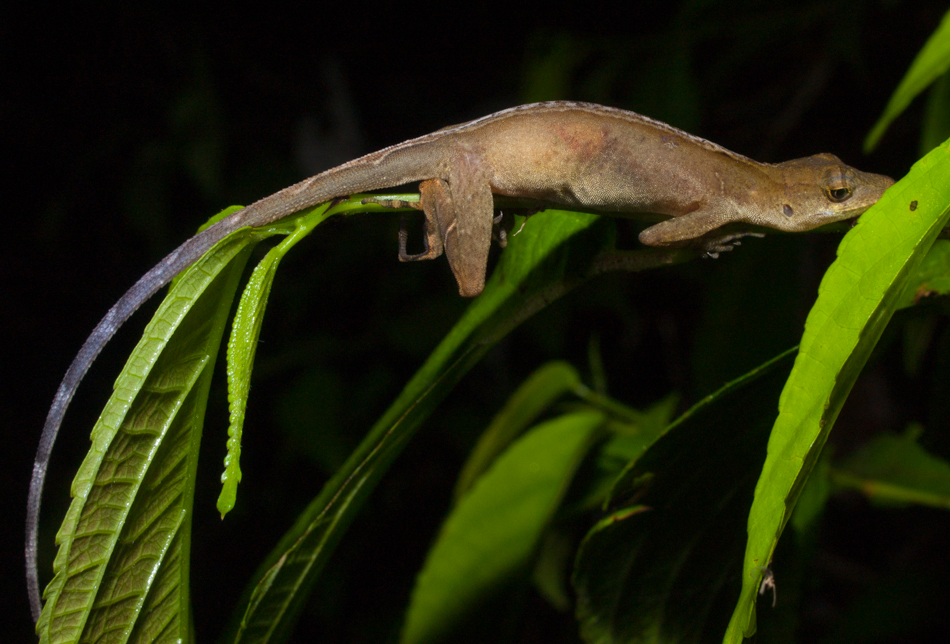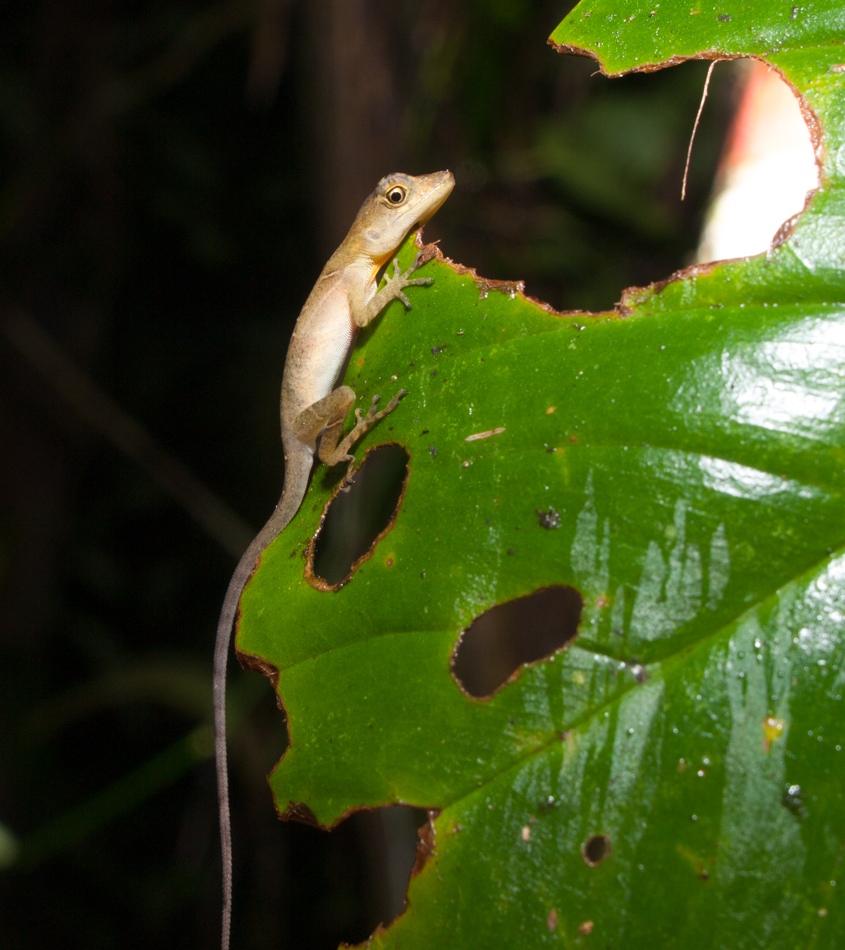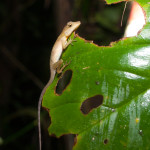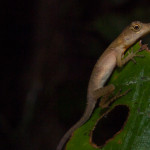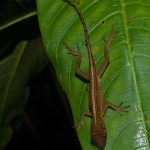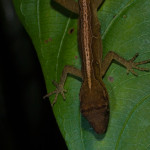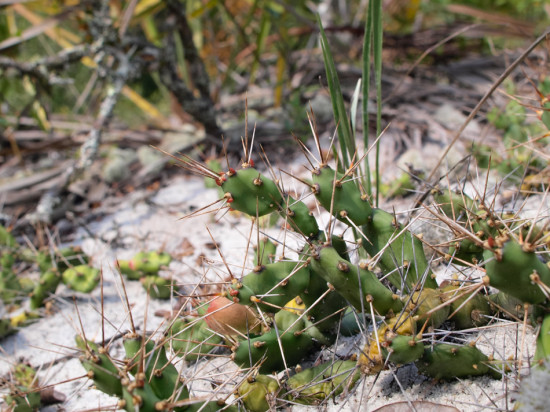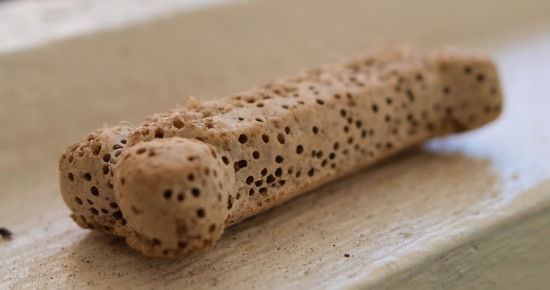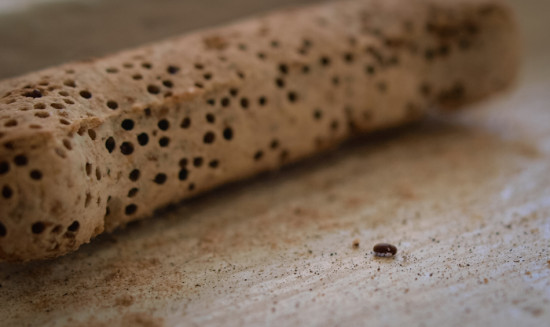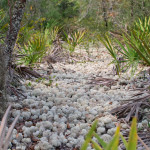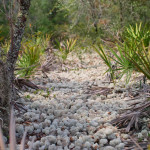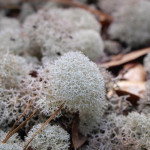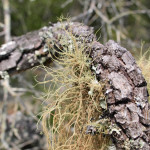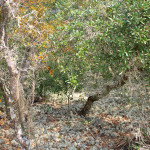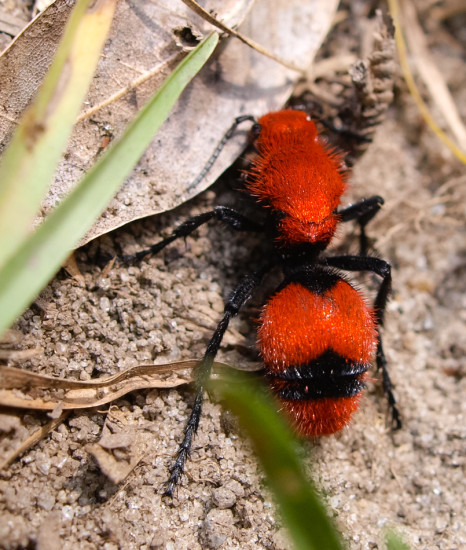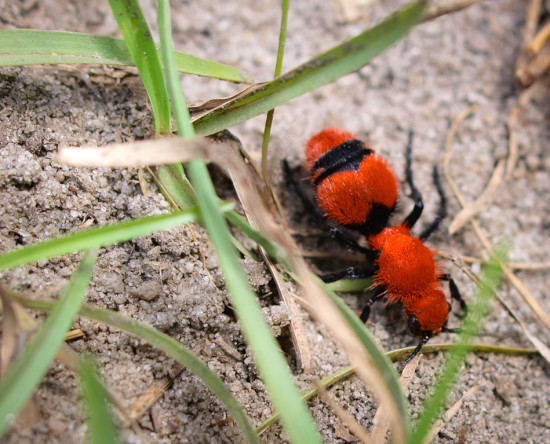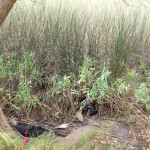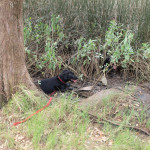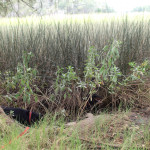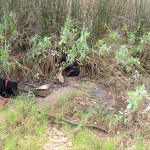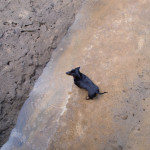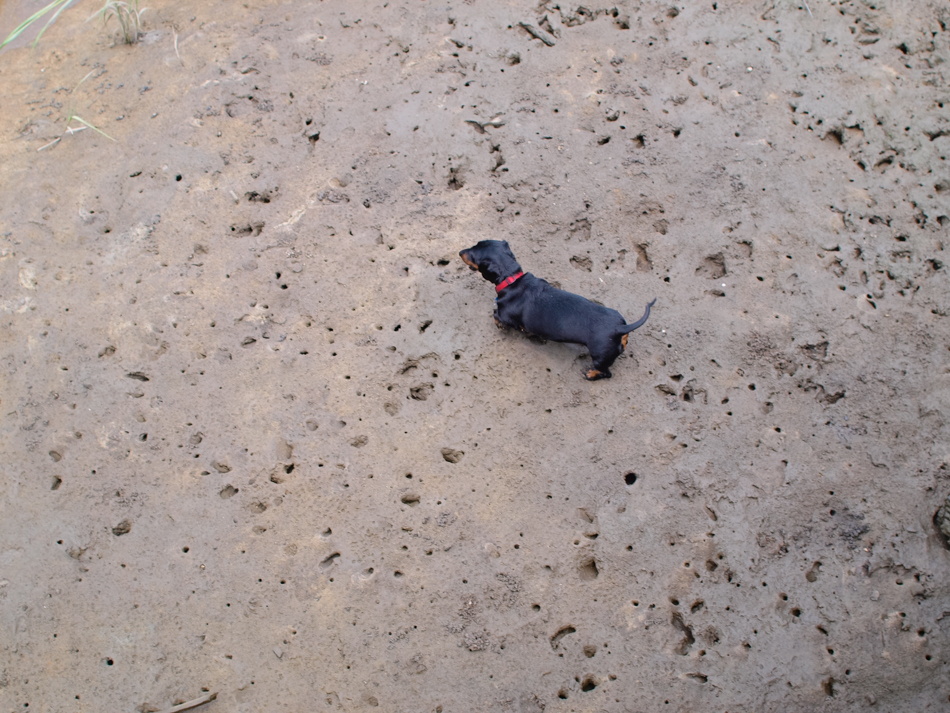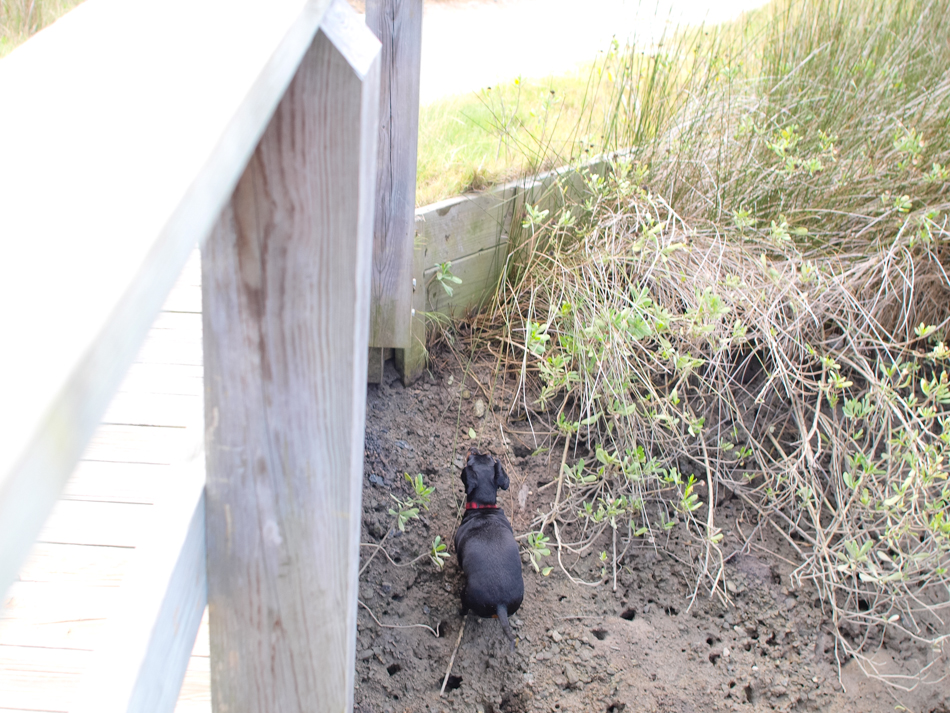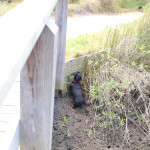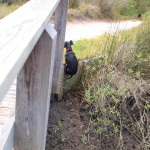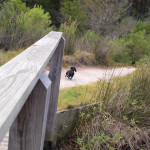Jessie Knowlton, one of the mentors of NAPIRE, had a keen eye for sleeping Norops polylepis.
Monthly Archives: September 2013
Georgian sand hill cactus
The dermestid mystery: solved
About a year ago, I noticed Amos frequently and obsessively scratching himself, and, after some searching, I discovered a single flea. I promptly treated him, but often felt something crawling on my legs and arms in my bed when I went to sleep. I would usually panic a bit – oh no! fleas in my bed! – but invariably, I would find that the insect responsible for disturbing a few leg hairs were Dermestid beetles. Beetles in this family are frequently used to strip flesh from carcasses and clean bone and are not known to be harmful or even bite.
I couldn’t figure out where they came from, but I was glad they weren’t fleas. The problem disappeared shortly after I started noticing them, but recently returned. I was still without an answer to the beetles’ origins, until yesterday. I moved an ottoman away from my bed, and discovered this milk bone, covered in holes and the little dermestid beetles running out of them. Amos is a peculiar dog: he will often hide his treats, rather than promptly eating them, and apparently, he forgot about this one.
Without a microscope but with Google Image Search, I managed to tentatively identify the beetles as Lasioderma serricorne, cigarette beetles, which are Anobiids, not Dermestids (the ‘furriness’ suggested to me that they were dermestids at first). In any case, I’ll be sure Amos isn’t allowed to hide his treats any longer.
Some lichens in the Sand Hills
A couple of lichens in the sand hills at the Ogeechee Canal.
Cowkiller Velvet Ant
The mutillids, like this Dasymutilla occidentalis, are abundant this year, possibly because of this cool connect:
These solitary wasps are hyperparasitoids (i.e., parasites of parasites) on cicada killers (like this Sphecius speciosus) , which are themselves parasitoids of cicadas… and this year saw a large emergence of 17-year cicadas.
The individual here is a female – males have wings and are not as vibrantly orange – and wasp vibrating as I photographed her. I discuss cicada killers and velvet ants in lecture, but I was unaware they had such an awesome natural history connection…
Priorities
Hiking through the park – the number one priority is keeping cool.
Eva doesn’t need a bridge
Eva decided not to use the bridge to cross a channel. She made two attempts to jump back up onto the trail, as was very excited to have achieved her second attempt.

